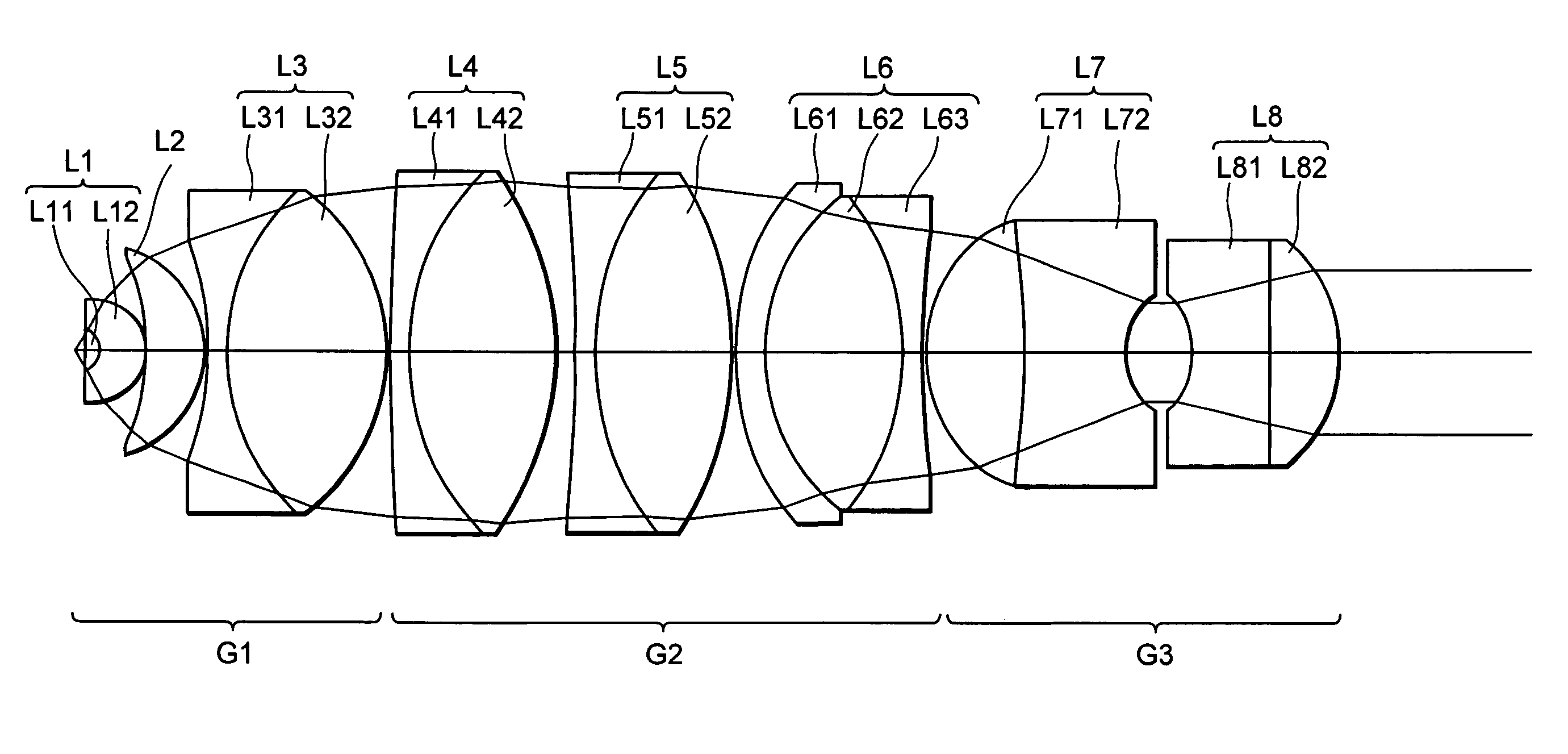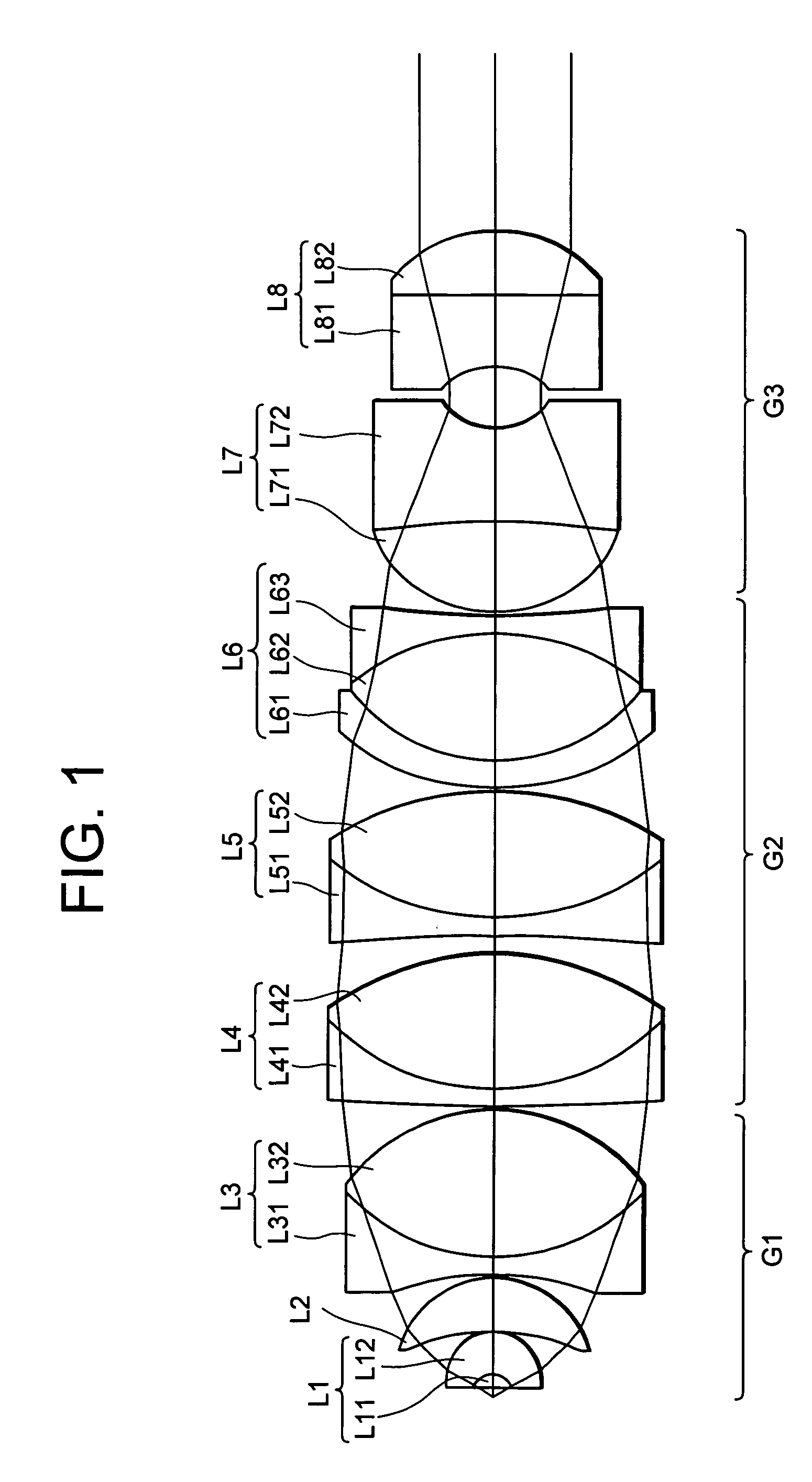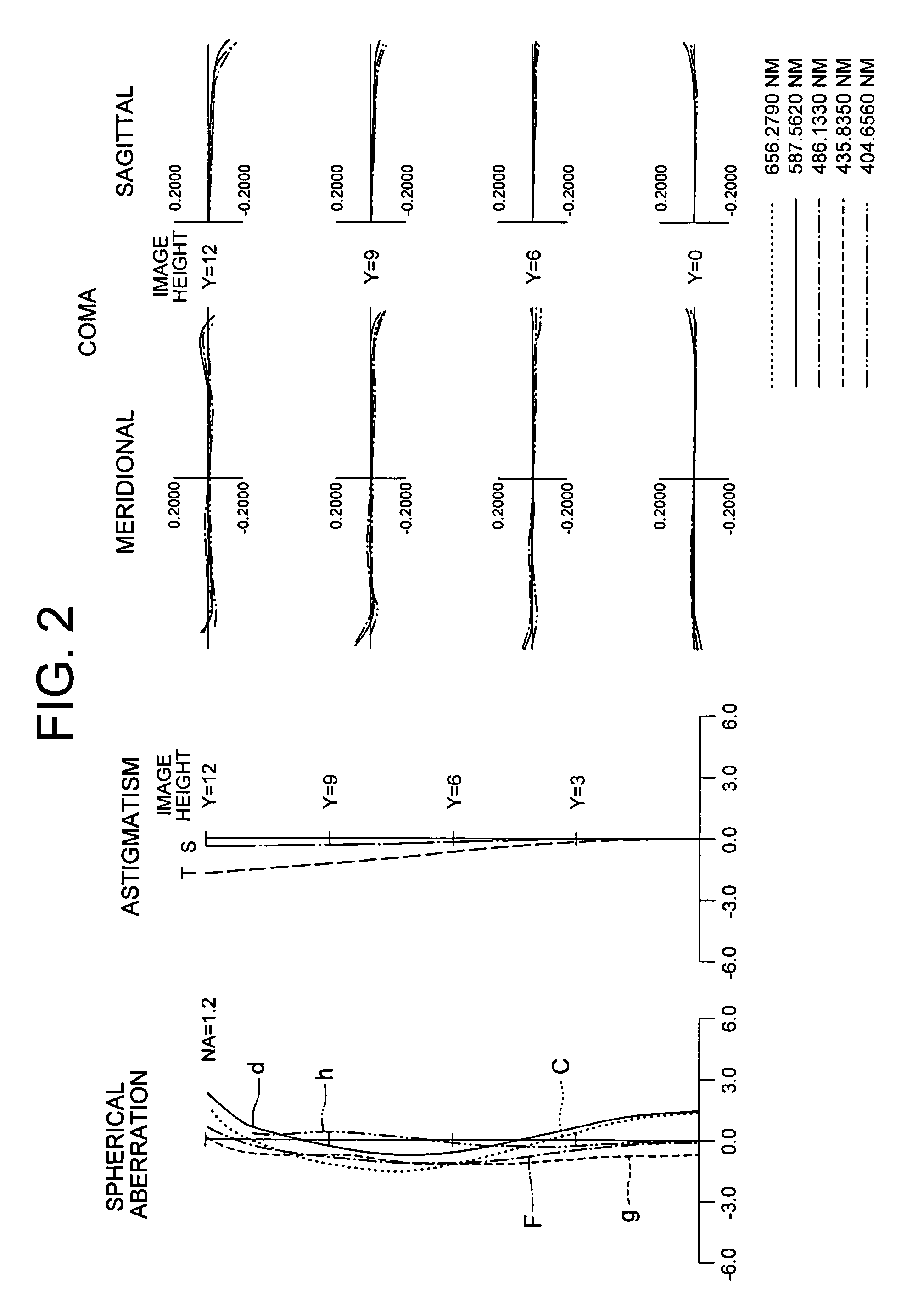Immersion microscope objective lens
a technology of objective lens and microscope, which is applied in the field of objective lens of microscope, can solve the problems of difficult to correct the aberration of successive lens groups, significant high-order spherical aberration, and interface spherical aberration, and achieve excellent imaging performan
- Summary
- Abstract
- Description
- Claims
- Application Information
AI Technical Summary
Benefits of technology
Problems solved by technology
Method used
Image
Examples
examples
[0037]In the following, specific examples of the immersion microscope objective lenses according to the present invention will be described. The following three examples correspond to the immersion microscope objective lenses according to the above-described first to third embodiments respectively, and the lens configuration diagrams (FIGS. 1, 3 and 5) of the first to the third embodiments apply to the lens configurations of the first to third embodiments respectively.
[0038]In the tables (Table 1, 2 and 3) for the first to third examples, β represents the magnification, NA represents the numerical aperture, WD represents the distance from the surface of the cover glass (a plane parallel glass disposed between the object and the first lens surface) that facing the objective lens to the first lens surface of the first lens group G1, and F represents the synthesized focal length of the whole lens system. The surface numbers in each table represent the sequential numbers of the lens sur...
first example
[0039]The immersion microscope objective lens used in the first example is an apochromat microscope objective lens with a magnification of 60× and a numerical aperture of 1.2 using water as immersion liquid. Specific values associated with the lens configuration of the first example are presented in Table 1 below.
[0040]
TABLE 1β = −60.0, NA = 1.2, WD = 0.27, F = 3.339|n0–n11| = 0.126surfaceno.rdndνdlens1−29.35640.7001.4585067.8(L11)2−1.10002.8001.8160046.6(L12)3−3.03490.1004−14.86122.6501.5924068.3(L2)5−6.30020.1506−29.03671.0001.5174252.3(L31)711.53157.0851.4978282.5(L32)8−11.41940.150963.78791.0001.5638460.7(L41)1012.94236.6901.4338595.3(L42)11−16.34081.00012−81.65301.0001.6400060.1(L51)1313.13886.8011.4338595.3(L52)14−16.22930.2001512.77441.5001.7550052.3(L61)168.93506.8101.4338595.3(L62)17−12.39631.0001.6134044.3(L63)1826.77380.200197.77844.3781.4978282.5(L71)20−60.00006.4821.5638460.7(L72)213.58073.06022−4.37375.4061.6968055.5(L81)23∞3.4001.6541239.7(L82)24−8.3147
(values corresp...
second example
[0042]The immersion microscope objective lens used in the second example is an apochromat microscope objective lens with a magnification of 60× and a numerical aperture of 1.25 using water as immersion liquid. Specific values associated with the lens configuration of the second example are presented in Table 2 below.
[0043]
TABLE 2β = −60.0, NA = 1.25, WD = 0.27, F = 3.339|n0–n11| = 0.126surfaceno.rdndνdlens1−14.58280.7001.4585067.8(L11)2−1.10002.2091.8160046.6(L12)3−2.61000.1004−12.00002.8811.5924068.3(L2)5−5.57160.1506−19.79451.0001.5174252.3(L31)711.16658.0271.4978282.5(L32)8−10.78300.150986.35341.0001.5638460.7(L41)1012.84707.5001.4338595.3(L42)11−16.13181.00012−113.62641.0001.6400060.1(L51)1314.29466.9341.4338595.3(L52)14−18.11990.2001513.43791.5001.8160046.6(L61)1610.06877.0001.4338595.3(L62)17−13.65791.0001.6134044.3(L63)1837.46210.200197.50005.0151.4978282.5(L71)20−60.00005.1171.6400060.1(L72)213.64913.40922−4.34383.9671.6968055.5(L81)23268.07063.5001.6541239.7(L82)24−7.6149
(v...
PUM
 Login to View More
Login to View More Abstract
Description
Claims
Application Information
 Login to View More
Login to View More - R&D
- Intellectual Property
- Life Sciences
- Materials
- Tech Scout
- Unparalleled Data Quality
- Higher Quality Content
- 60% Fewer Hallucinations
Browse by: Latest US Patents, China's latest patents, Technical Efficacy Thesaurus, Application Domain, Technology Topic, Popular Technical Reports.
© 2025 PatSnap. All rights reserved.Legal|Privacy policy|Modern Slavery Act Transparency Statement|Sitemap|About US| Contact US: help@patsnap.com



